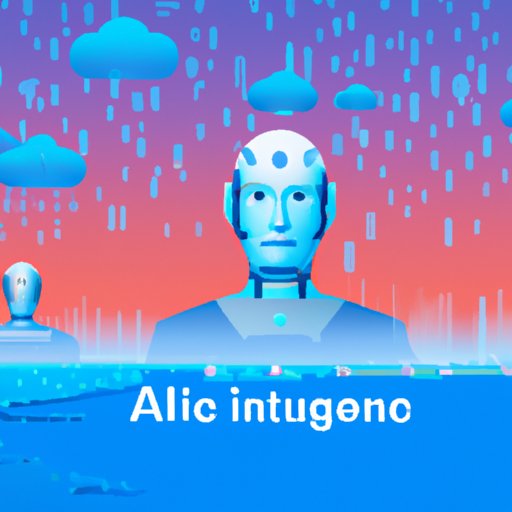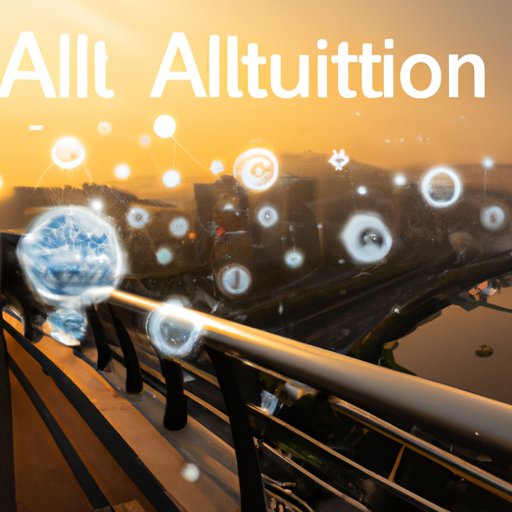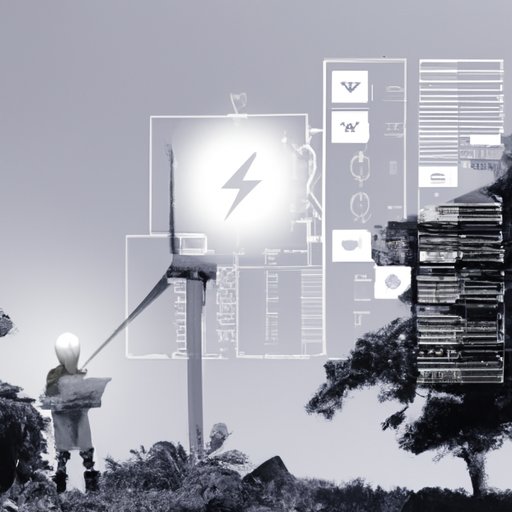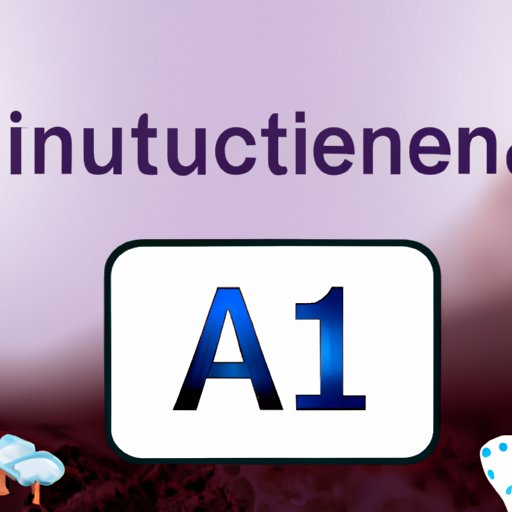Introduction
Artificial intelligence (AI) has become a ubiquitous part of our lives. It is used for everything from self-driving cars to facial recognition software, and its applications seem endless. However, AI can also have a huge impact on the environment. This article will explore the various ways in which AI is affecting the environment, from reducing carbon emissions to improving air quality and promoting sustainable agriculture practices.

The Impact of AI on Climate Change
Climate change is one of the most pressing environmental issues of our time, and AI is playing an increasingly important role in addressing it. AI can help reduce carbon emissions by providing more accurate forecasting and analytics, as well as by optimizing energy usage in homes and businesses. AI can also be used to develop more efficient solar panels and wind turbines, and to create better models of climate change so that we can better predict its effects.
In addition, AI can help us identify areas where emissions can be reduced, such as by using data to determine the most efficient routes for transportation. AI can also be used to develop better strategies for reducing emissions from agricultural activities, such as optimizing fertilizer use or monitoring water usage.
However, there are potential risks associated with using AI to address climate change. AI systems can be biased, and if they are not properly trained and monitored, they could lead to inaccurate predictions or decisions that could worsen the effects of climate change.

Exploring the Benefits of Using AI to Reduce Pollution
Air pollution is a major problem in many countries, and AI can help address this issue by providing more accurate monitoring and analysis of air quality. AI-powered sensors can detect pollutants in the air and alert authorities when levels become too high. AI can also be used to analyze large amounts of data to identify sources of air pollution and suggest solutions for reducing them.
AI can also be used to develop more efficient technologies for reducing air pollution. For example, AI-enabled vehicles can be programmed to reduce emissions by using alternative fuels or by driving more efficiently. AI can also be used to optimize industrial processes to reduce emissions.
However, there are potential challenges to implementing AI-based solutions for reducing air pollution. AI systems require large amounts of data, and collecting and managing this data can be costly and time-consuming. In addition, AI systems may not be able to accurately identify all sources of air pollution, and they may not be able to provide adequate solutions for reducing them.
How AI Can Help Improve Air Quality
AI can also be used to improve air quality by providing more accurate and timely information about air quality conditions. AI-enabled monitoring systems can detect pollutants in real time and alert authorities when levels become too high. AI can also be used to analyze large amounts of data to identify areas where air quality needs to be improved, and to suggest solutions for doing so.
AI-driven solutions for improving air quality can include measures such as constructing green roofs, installing air filters, and planting trees. AI can also be used to optimize traffic patterns and reduce vehicle emissions by routing vehicles along the most efficient routes.

Analyzing the Effects of AI on Renewable Energy Sources
AI can also be used to increase the production of renewable energy sources, such as solar and wind. AI-based systems can be used to optimize the placement of solar panels and wind turbines, as well as to forecast energy production and adjust output accordingly. AI can also be used to develop more efficient batteries for storing renewable energy.
However, there are potential issues with AI-enabled renewable energy solutions. AI systems require large amounts of data, and collecting and managing this data can be costly and time-consuming. In addition, AI systems may not be able to accurately predict energy production, leading to inefficient energy usage.
Investigating the Role of AI in Sustainable Agriculture Practices
AI can also be used to promote sustainable agriculture practices. AI-driven solutions can include measures such as optimizing irrigation systems, monitoring soil health, and predicting crop yields. AI can also be used to identify pests and diseases and suggest appropriate treatments.
However, there are potential challenges to implementing AI-powered systems for sustainable agriculture. AI systems require large amounts of data, and collecting and managing this data can be costly and time-consuming. In addition, AI systems may not be able to accurately identify all pests and diseases, and they may not be able to provide adequate solutions for controlling them.
Conclusion
This article has explored the various ways in which AI is impacting the environment, from helping reduce carbon emissions to improving air quality and promoting sustainable agriculture practices. While AI can be used to great effect in addressing environmental issues, there are also potential risks and challenges associated with its use. It is essential that AI systems are properly trained and monitored, and that they are implemented responsibly and ethically.
Overall, AI has the potential to play a significant role in protecting and preserving the environment. By leveraging the power of AI, we can reduce carbon emissions, improve air quality, and promote sustainable agriculture practices. As we move forward, it is essential that we continue to explore and develop the potential of AI to protect our planet.
(Note: Is this article not meeting your expectations? Do you have knowledge or insights to share? Unlock new opportunities and expand your reach by joining our authors team. Click Registration to join us and share your expertise with our readers.)
